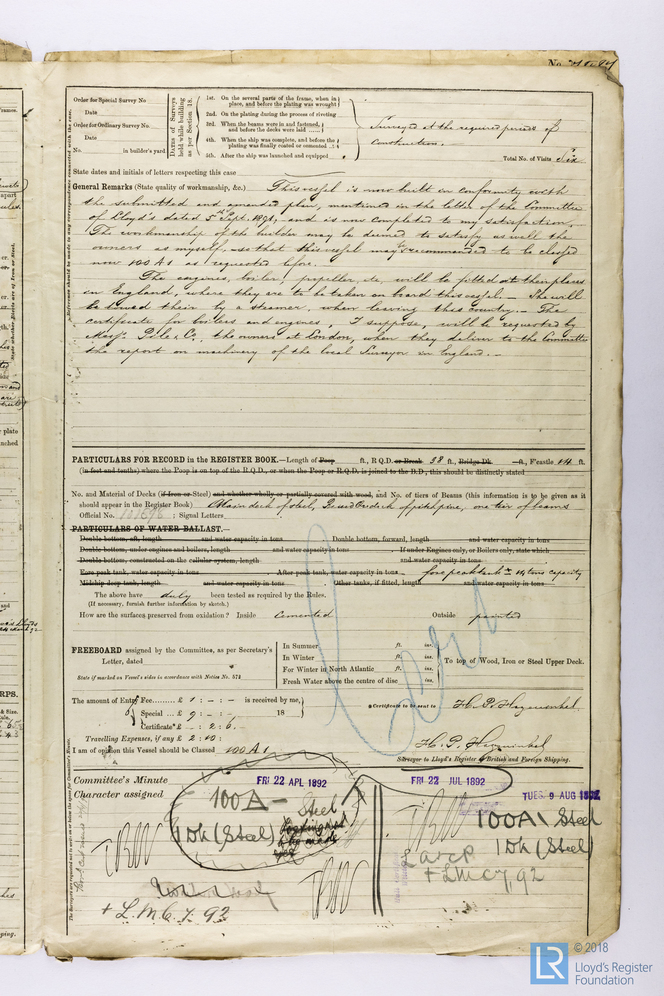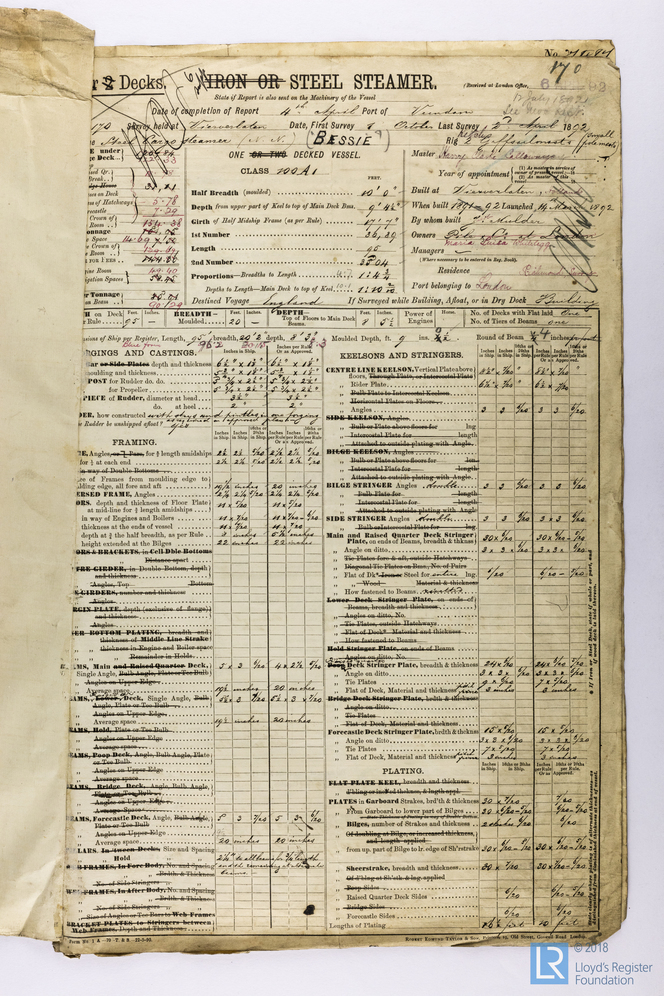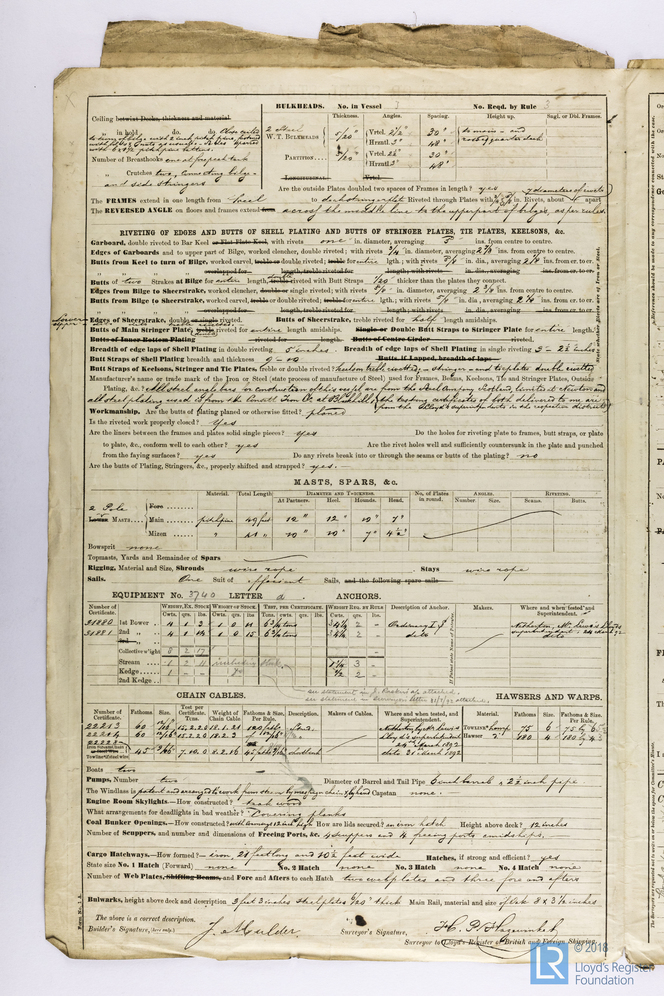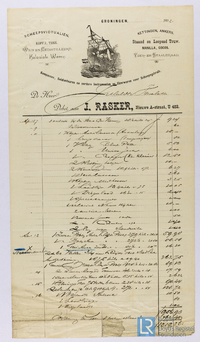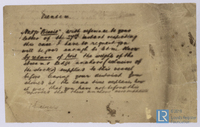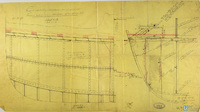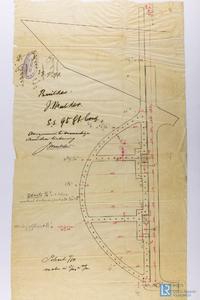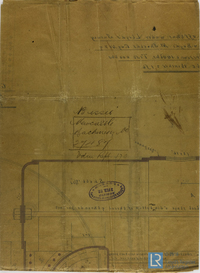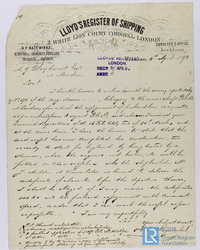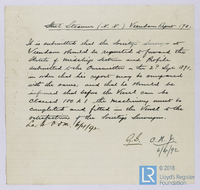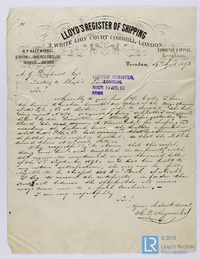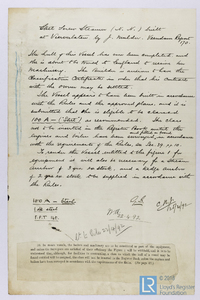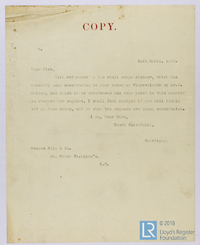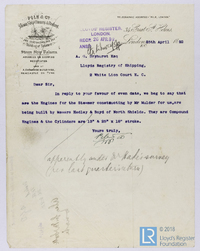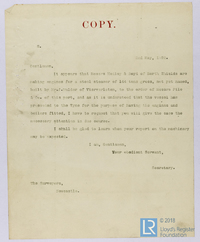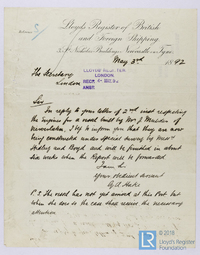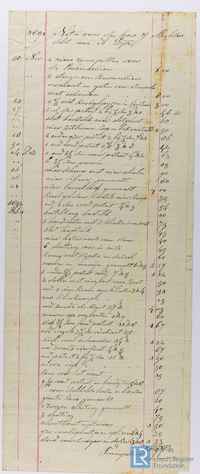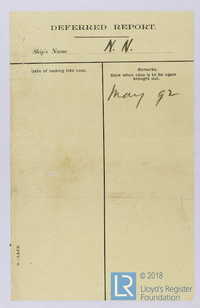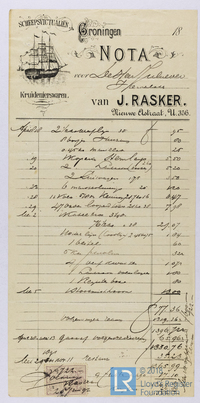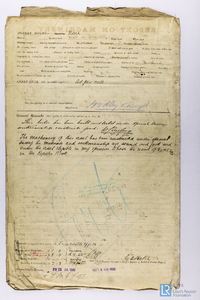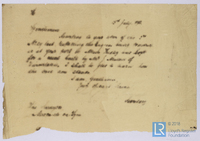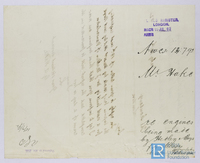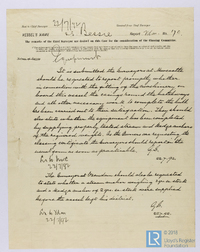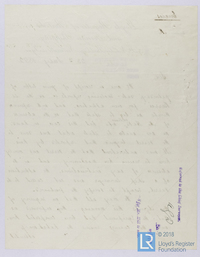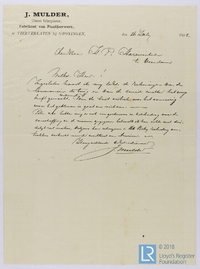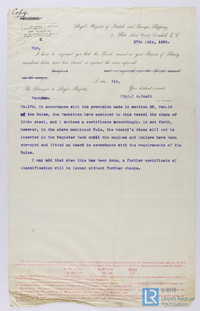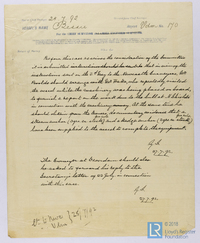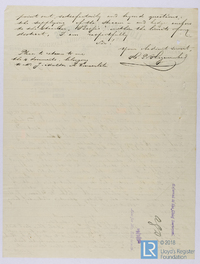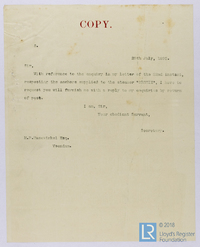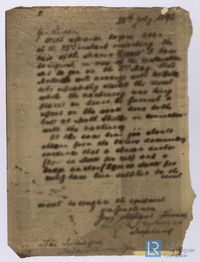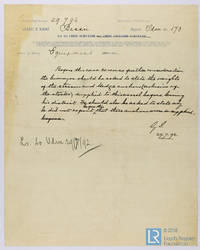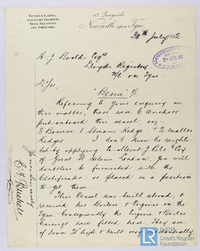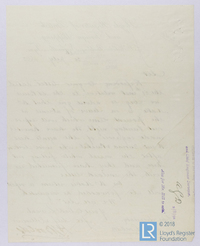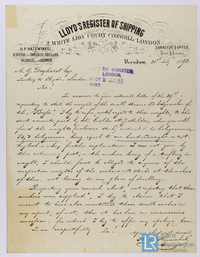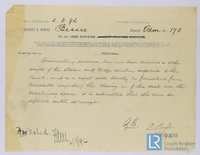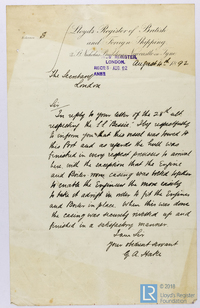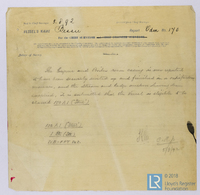- Related documents Related
- Full details Details
- Report document? Report?
Use the data export button to extract customised data sets from the Ship Plan and Survey Report Collection. Available in TSV and CSV formats.
Date recorded as the time of writing.
04/04/1892
The year in which a vessel’s construction is completed.
1892
The individual and/or organisation listed as having been responsible for constructing the vessel. This can/may be the same as the owner and/or manager.
J Mulder
The country in which the vessel’s construction took place, at the time of writing.
The Netherlands
Unique internal numbers used for identifying, referring and retrieving a specific survey report.
170
The country (flag) that a vessel is registered to, at the time of writing.
United Kingdom
Records that constitute Lloyd’s Register’s first official encounters with a specific vessel, e.g. a survey report.
Y
The date of last visit by a surveyor.
02/04/1892
Name of the individual/entity/organisation responsible for authoring the record
H P Hazewinkel
Name of surveyor.
Hendrik Pieter Hazewinkel
Classification symbol assigned to a vessel by Lloyd’s Register’s Classing Committee denoting the quality of construction and maintenance.
100A- steel
The name of the port/place from which a vessel’s voyage originated.
Vierverlaten
A vessel’s means of propulsion.
Steam
Is the steamer assisted by sail?
No
A ship’s total internal capacity of a ship measured in register tons from the top of the floors to the tonnage deck.
121
Confirmation as to whether the vessel was equipped with refrigeration machinery to aid in the transport of frozen or chilled cargo/goods.
No
Does the vessel possess an auxiliary power source?
No
Is electric lighting fitted to the vessel?
No
Maximum length of a vessel’s hull measured parallel to the waterline.
95
Prescribed by flag/registration authorities, and usually excludes a small part of the stern. It is measured from the foreside of the stern at the extreme top to the afterside of the stern post.
95
Measurement from the underside of the upper deck on the centre line to the upper side of the bottom plating.
8.3
Pertinent, useful or interesting recorded content.
Class raised to 100A1 Steel on the 9th August 1892
Name of ship as recorded on the record
Bessie
The process of transferring a vessel to water, but not necessarily her completion.
14/03/1892
The port or place in which the vessel’s construction took place, at the time of writing.
Vierverlaten
Abbreviations of the names of ports with Lloyd’s Register survey offices.
Vdm
Official administrative title (often printed) of a record used by Lloyd’s Register or external organisations.
Iron or Steel Steamer
The listed port to which a given vessel belongs.
London
The date of first visit by a surveyor.
01/10/1891
The individual and/or organisation listed
Pile & Co
Location where the document is written.
Vierverlaten
Location where a vessel’s survey was undertaken.
Vierverlaten
Date of the meeting of the Classing Committee.
22/04/1892
The name of the port/place of destination given.
England
Predominant material(s) utilised in a vessel’s construction.
Steel
A ship’s total internal volume in ‘register tons’ (replaced by gross tonnage post 1982).
152
Tonnage derived by deducting from the gross register tonnage the capacity that in unavailable for cargo, e.g. machinery space, fuel, crew accommodation etc.
86
Is machinery fitted at the aft of the vessel?
No
Generally a smaller additional auxiliary boiler (often used while the vessel is at port).
No
Name of the Proving House responsible for the public testing and certification of a vessel’s anchors and/or chain cables.
No
Moulded dimensions breadth- Also referred to as moulded beam. The distance from the inside of the starboard side plating to the inside of the port side plating.
20
Also referred to as extreme breadth. The distance from the extreme starboard side to the extreme port side.
20.2
Physical extent of a record.
1
Report an issue with this document
Have you noticed missing or incorrect data or images for this document?
Please let us know and we will rectify the issue as soon as possible.

